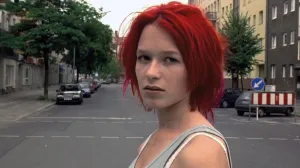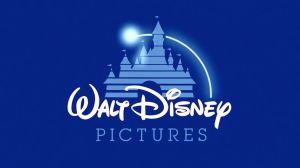Zack Snyder’s Justice League being released seems to be as exciting for the film’s crew as it is for the fans who willed it into existence. The original version of the film is set to share Snyder’s vision for the DC Comics ensemble story and that means cinematograper Fabian Wagner will see his true work his the big screen and the sets and worlds designed by production designer Patrick Tatopoulos will be portrayed as intended. It’s redemption a long time coming after these crew members’ names were attached to a product released in theaters which was ultimately drastically different from what they had come together to create.
Videos by ComicBook.com
“Congratulations to [Zack Snyder], congratulations to the fans, man, because they’re the ones, and him, to make this happen,” Tatopoulos says over Zoom while talking to ComicBook.com. The full interview can be seen in the video above. “The big thing I keep saying is this movie was already there when he directed it and when he was ready to cut it and was cutting it,” the production designer explains. “A lot of the things you haven’t seen in Justice League were already, obviously, in his mind and being created.”
The experience which the entire Justice League family endured was hard on all parties. Zack Snyder stepped away from his Justice League when he became exhausted by studio interference following the unexpected loss of his daughter Autumn. Following the director’s departure from the project, a new director stepped in and the movie was largely reshot, resulting in a very different version of the movie hitting theaters when compared to the 4-hour epic which releases on HBO Max on Thursday.
“Your director comes on board and you bring somebody else on board, that person’s going to have this vision to come on board, so their choices that that person makes,” Tatopoulous said. “It hurts more because you put your heart into the vision you have. You do it and you create something and it’s been tweaked to a level where it’s so different, it’s not a good thing.”
For now, Zack Snyder’s Justice League is said to be the end of the road for Snyder’s take on the DC characters and their stories (though, fans are already beginning their rally for more). If this truly does end up being the end of the line for the saga which began in 2013 with Man of Steel, Snyder added a new Knightmare sequence to the movie that both answers questions about moments fans would have been left to wonder about and also offers a look at what Snyder has in mind for those sequels which might never happen.
“Those are glimpses of the future,” Tatopoulos says, oozing with a confidence of more DC stories in this world. “I know you’re going to see more of that. I know you will see more of that world. It’s going to expand the way this movie shows you, like the way it’s going. It’s the expansion of future Justice League. I don’t know what’s going to happen with that, but it’s drafted for the future, for sure.”
For now, Tatopoulos is simply excited to have his work on the film shared with the world, and he should be. Having visited the set of Justice League back when Tatopoulos was still working on it, his massive efforts were breathtaking, whether they were abandoned warehouses all set for a battle with Parademons or Bruce Wayne’s underground hanger beneath the Gotham Harbor. The massive practical sets took up sound stages on the London set in their entirety
“When we were all together doing this movie so many years ago now, and suddenly having a rebirth like that because it’s been a lot of post-production work recently and I know we’re going to have to step back,” Tatopoulos says. “I need to say that it’s strange that there’s such a gap of time between the days we were like on set doing the things, shooting, and the time where this thing is reborn. And that’s a huge deal. It’s just a crazy feeling.”
Are you excited for Zack Snyder’s Justice League? Share your thoughts in the comment section or send them my way on Instagram!
Start at the Beginning

ComicBook.com: Congratulations on getting this out there in the world, first of all.
Patrick Tatopoulous: Congratulations to [Zack Snyder], congratulations to the fans, man, because they’re the ones, and him, to make this happen. The big thing I keep saying is this movie was already there when he directed it and when he was ready to cut it and was cutting it. A lot of the things you haven’t seen in Justice League were already, obviously, in his mind and being created.
And for us, we were already… We built we created things for him and seeing those things not happening the way he wanted it to be, it was sad and frustrating. So now, we’re all ecstatic, of course, because we’re big supporter of him. He’s such a cool guy. He’s such a great personality.
CB: I want to start at the beginning of your work with Zack, which was Batman v. Superman, and you went from that to Justice League. I would just love to hear what kind of elements of Batman v. Superman spilt over into the big sequel?
PT: Obviously, one, if you watch the two films, you know that the world of Batman doesn’t change drastically. We discover more of his world. It’s broader. For example, there’s more vehicles and more things. And of course, this is what you expect from Batman. When we were doing Batman/Superman, the Justice League was… Its nose on the corner there. We knew he was coming. So obviously, every design we did… I’m talking obviously for my part of the thing, but the designs were meant to be able to be expanded.
Like the Batmobile, for example, I always go back to this baby, because to me, that was my first thing that I did for Zack in some ways. Because when we first met on Batman/Superman, the first thing I went to a cafe next door and sketched was the Batmobile. And that to me, with a few words that he told me that were very strong and to the point, made me understand what he wanted his Batman to be.
So, on defining that, I knew that that Batmobile would expand for the world and the world would expand. Gotham, Metropolis haven’t changed. They were the same, honestly.
But what you discover is other part of it and that there are actually more heroes living in there, too. To tell you the truth, something you don’t really see. You don’t want to create two maps of our world because you want to make sense. If they fly the Flying Fox to Russia, you stop needing to understand this. So, its great to see how that world, you used to know that much of it, and now you know that. And you basically creating a map of our world and that’s amazing. That’s cool.
Other Films

CB: What was it like to have to collaborate with Wonder Woman director Patty Jenkins and her team to make sure that Themyscira was consistent with the solo movie, while also maybe communicating to Aquaman director James Wan and his group what Atlantis was going to look like here?
PT: Absolutely. It was actually all three people because those people are amazing. James is amazing and they’re all fantastic people, so there was a great collaboration between them.
That said, what Zack wanted to be able is to bring to the table something fresh and new that you have never seen on the other movies. So what we did for Themyscira, we decided, “Well, the island, you only see it in Wonder Woman, but we’re going to see the other side of it. We’re going to build that little temple that we’ve seen and we’ll have the whole action happens. It’s on the outside of the island.” So in some ways it’s a joint… Although the movie was done just as Wonder Woman, while they are trying to just figure out how the mystery could work, Zack found a way to go into like an ancient temple on the corner of the island. That move was really clever because it’s not disrespectful. It is more, “Hey, I’m going to show you fantastic.”
Aquaman was the same. James Wan, I think, he started to figure out… I mean, he probably had it in his mind big time, but he hadn’t come up with concept world yet and things. So, we had to go to the Aquaman world and what we did, we went to the ancient Atlantis.
The side of it that we show on our film is not what you see on James Wan. James Wan is prioritizing the futuristic, crazy, underwater… So, again, the two world can live together into a harmonious, you know, Atlantis or Themyscira. That’s the way we approach it. We could say we created those worlds, but we created some of it. And for me, that was enough to be exciting because I’ve never done a movie where I had to, with a director, define so many worlds.
Apokolips

CB: Speaking of worlds, we saw Darkseid’s world. Darkseid’s world almost seems like a character in itself. Can you tell me about developing that portion of this movie?
PT: By the way, we pulled it off because it was a giant team and the team together to make this. This is not the creation of a designer, it’s a creation of multiple people. Visual effect people were so involved in this. Zack had every idea of this but those are those moments in the movie where you discover a new world and it doesn’t relate to anything else that you’ve done and seen before. I think, this I got to say just to be fair. This was really the hard work of many, many great concept artists and people working together on defining that world and visual effects. Because what we call a reshoot, the huge part of the work was a gigantic visual effect feast, obviously. Like, even if they went back into the sets we had shot back then, they would create those set digitally.
So, we had the same design if you made that, by the way we invented, we created that.
By the way, those are glimpses of the future. I know you’re going to see more of that. I know you will see more of that world. It’s going to expand the way this movie shows you, like the way it’s going. It’s the expansion of future Justice League. I don’t know what’s going to happen with that, but it’s drafted for the future, for sure.
CB: The Darkseid stuff seems to be just a tip of the iceberg. There was a bigger plan and originally a sequel and everything. Did you guys have conversations about the next movies? Did you know what kind of worlds we were going to see in the future? What did that sound like?
PT: Well, I don’t think I want to say too much about that because it’s still a little bit… you know? I want Zack to respond to you for those things because it’s so much part of a bigger picture and there’s a strategy design, he has there, the way he wants to bring it up, I think. And this is not me just… I don’t want to stop, I have huge respect for him. I think that that’s a question to the man, I would say!
Does More Exist?

CB: Does everything you worked on appear in this film or were there ideas for things that got left out early on before production that sounded like they would have been fun to work on and show off?
PT: I don’t think… It was the opposite. It was the opposite, it’s like the big thing. We got tons of stuff that Zack shot. I mean, a lot of material going from sets, to moment, situation, communication… Things that didn’t make it to the full Justice League because it was a reinvention of the thing. Somebody else stepped in and obviously different vision. But a lot of the things you haven’t seen are now in the movie to get… Because Zack knew what he wanted the movie to have in it back then, so it’s more about the idea that you discovered, you’ve seen it on the movie. There’s world, the sets that you haven’t seen, and… Like moments in the movie and any of those that you haven’t seen before. Those were shot before. A lot of that stuff was shot in the first movie when Zack was doing it.
And for people like us, it was kinda sad when the movie came out. The first version came out that a lot of those great action, very psychological moment, deep moment, and storytelling moments were not there. It was frustrating because those sets you’ve seen in the movie now are part of the sets that really defined the vision of Zack. And to have the netball of head obviously was also worked with more intensity. We defined them with like the room with the Darkseid, the temple with the Darkseid… That place was really… The way we approached it was about defining the story of Darkseid from nothing. That was such a great moment, and not seeing it in movie was so disappointing, obviously.
The Theatrical Release

CB: What was your reaction when you saw the theatrical version of Justice League? Did the crew communicate with each other like, “They took out the best parts…”?
PT: Your director comes on board and you bring somebody else on board, that person’s going to have this vision to come on board, so their choices that that person makes. I’m not going to get onto the political stuff. No, but that said, the movie clearly took a turn and a turn that reflected onto everyone’s work, obviously Zack’s work the most. But even us, the work gets changed. At the end of the movie, for example… the way that thing look look drastically different on the other way. And that was not the way it was intended.
And so, you don’t have control over movies like that even as a designer. You have as much control as you can have by culture. I mean, collaboration with the director where you create something. Post-production sort of going to go in different places. You’re doing another movie, the guys are still working on this, they still develop different aspect and things change a bit. The direct label, it was obviously… It hurts more because you put your heart into the vision you have. You do it and you create something and it’s been tweaked to a level where it’s so different, it’s not a good thing.
The Speed Force

CB: I loved seeing Barry in the Speed Force. The Flash TV show has done it one way and we’ve seen versions of it elsewhere but this was… I mean, what you guys did was unbelievable. Can you talk about the design of the Speed Force sequences?
PT: Yeah. Well, that does speak to design, but I will tell you again, it’s not me trying to be modest, but that’s kudos also to visual effect guys. They created that look because that look, it’s a visual look. A visual effect look and there’s a point where you can do whatever you want as a designer developing a certain story, but then the tools, the effects used to create those. But yeah, to me, it’s one of the coolest thing. It’s just so powerful. I’ve never seen one like that. I was blown away. I was blown away when I saw it.
Knightmare World

CB: The Knightmare sequence, I would love to hear, what do you think of that world? What were you guys trying to establish in that scene?
PT: Well, I was very involved in this because we really created large of set for that and we created the aesthetic of it. It was like Queen of Wasteland world, you know? You see how it comes out. It comes out at hatch and it comes into the surface and there is this whole thing happening. The way we designed it, we designed it the most like the wasteland of our world. And in some ways, you see that suddenly the whole aesthetic change, the whole color scheme changes, we became into those earth-tone and sea and all that stuff just showed transition. The Batman is blue, Steel is black. This, and now we flipped him into the world of like sandy, dust and thing, somewhere where it doesn’t seem to be any organism. It’s not a reincarnation of him, it’s a reinvention of him. I really, really enjoyed that part of the film because I designed a Parademon, that was part of my gig. I didn’t do the creatures in the movie, but that Parademon, I had a blast with.
And having him turning into this kind of like sandy warrior, with the sand and the dust and the anchor ship and all that stuff that he’s wearing, I really, really dig that. And I was, I was very involved in that part of it. You know, when you take a hero, you used to see your hero into certain environments. We know the Batman, we know the colors of the city of Gotham, and we know the color of his suit. We know his blackness.
Suddenly it becomes… It’s almost like a ghost in the night. And this time you have to become a ghost in the sand, in the dusty world. And he become that. And those are, to me, like the coolest thing to play with. When he told me about this, the day he came in, “We’re going to need a dream sequence. Could be this.” I sketched him out into this world. I just had such a blast with it. I love that. I love when you take something already established and then turning into something else. I’m crazy about that stuff.
CB: Your passion comes through, I could see. I love your enthusiasm. I’ve watched the movie twice already, and I’m going to watch it again. I’m eight hours into it. I’m going to keep going. I’ll get to 12 and 16.
PT: I can tell you’re a huge fan, but you’re going to keep discovering stuff.
Tying It All Up

CB: Man of Steel is my favorite DC movie, and I love Batman v. Superman: Ultimate Edition. The way this story just completed everything in a way that the theatrical didn’t. It breaks my heart that I feel like this could be the end of it. I want this story to continue so badly but I am so happy for the fans, for you guys and for myself to get to see this.
PT: You know of the master, the man, Zack. You talk about my enthusiasm. I’m really expressive, it’s my Mediterranean roots. I’m Greek and French, and I’m like always, “Ahh!” Zack has it in him as well, but he brings that to us. You know, I can’t talk about the movie without being f-cking excited. I have to use my words. And it’s crazy, also, I need to say. When we were all together doing this movie so many years ago now, and suddenly having a rebirth like that because it’s been a lot of post-production work recently and I know we’re going to have to step back. I need to say that it’s strange that there’s such a gap of time between the days we were like on set doing the things, shooting, and the time where this thing is reborn. And that’s a huge deal. It’s just a crazy feeling.








